Ryobi R36HTRBL Handleiding
Ryobi
Heggenschaar
R36HTRBL
Bekijk gratis de handleiding van Ryobi R36HTRBL (16 pagina’s), behorend tot de categorie Heggenschaar. Deze gids werd als nuttig beoordeeld door 100 mensen en kreeg gemiddeld 5.0 sterren uit 50.5 reviews. Heb je een vraag over Ryobi R36HTRBL of wil je andere gebruikers van dit product iets vragen? Stel een vraag
Pagina 1/16

R36HTRBL

2
Original Instructions
IMPORTANT!
It is essential that you read the instructions in this manual
before assembling, operating, and maintaining the
product.
Subject to technical modication.
Safety, performance, and dependability have been given top
priority in the design of your cordless hedge trimmer.
INTENDED USE
The cordless hedge trimmer is intended only for outdoor use
in dry and well-illuminated conditions.
The product is designed for home or domestic use. The
product is intended to cut and trim hedges, shrubs, and
similar vegetation.
Do not use the product for any other purpose.
GENERAL PRODUCT SAFETY WARNINGS
WARNING! Read all safety warnings, instructions,
illustrations and specifications provided with this
power tool. Failure to follow all instructions listed below
may result in electric shock, re, and/or serious injury.
Save all warnings and instruction for future reference.
The term “power tool” in the warnings refers to your mains-
operated (corded) product or battery-operated (cordless)
product.
WORK AREA SAFETY
■Keep work area clean and well lit. Cluttered or dark
areas invite accidents.
■Do not operate power tools in explosive
atmospheres, such as in the presence of flammable
liquids, gases or dust. Power tools create sparks
which may ignite the dust or fumes.
■Keep children and bystanders away while operating
a power tool. Distractions can cause you to lose control.
ELECTRICAL SAFETY
■Power tool plugs must match the outlet. Never
modify the plug in any way. Do not use any adapter
plugs with earthed (grounded) power tools.
Unmodified plugs and matching outlets will reduce risk
of electric shock.
■Avoid body contact with earthed or grounded
surfaces, such as pipes, radiators, ranges and
refrigerators. There is an increased risk of electric
shock if your body is earthed or grounded.
■Do not expose power tools to rain or wet conditions.
Water entering a power tool will increase the risk of
electric shock.
■Do not abuse the cord. Never use the cord for
carrying, pulling or unplugging the power tool. Keep
cord away from heat, oil, sharp edges or moving
parts. Damaged or entangled cords increase the risk of
electric shock.
■When operating a power tool outdoors, use an
extension cord suitable for outdoor use. Use of a
cord suitable for outdoor use reduces the risk of electric
shock.
■If operating a power tool in a damp location is
unavoidable, use a residual current device (RCD)
protected supply. Use of an RCD reduces the risk of
electric shock.
PERSONAL SAFETY
■Stay alert, watch what you are doing and use
common sense when operating a power tool. Do not
use a power tool while you are tired or under the
influence of drugs, alcohol or medication. A moment
of inattention while operating power tools may result in
serious personal injury.
■Use personal protective equipment. Always wear
eye protection. Protective equipment such as a dust
mask, non-skid safety shoes, hard hat or hearing
protection used for appropriate conditions will reduce
personal injuries.
■Prevent unintentional starting. Ensure the switch
is in the off-position before connecting to power
source and/or battery pack, picking up or carrying
the tool. Carrying power tools with your finger on the
switch or energising power tools that have the switch on
invites accidents.
■Remove any adjusting key or wrench before turning
the power tool on. A wrench or a key left attached to
a rotating part of the power tool may result in personal
injury.
■Do not overreach. Keep proper footing and balance
at all times. This enables better control of the power tool
in unexpected situations.
■Dress properly. Do not wear loose clothing or
jewellery. Keep your hair and clothing away from
moving parts. Loose clothes, jewellery or long hair can
be caught in moving parts.
■If devices are provided for the connection of dust
extraction and collection facilities, ensure these are
connected and properly used. Use of dust collection
can reduce dust-related hazards.
■Do not let familiarity gained from frequent use of
tools allow you to become complacent and ignore
tool safety principles. A careless action can cause
severe injury within a fraction of a second.
POWER TOOL USE AND CARE
■Do not force the power tool. Use the correct power
tool for your application. The correct power tool will
do the job better and safer at the rate for which it was
designed.
■Do not use the power tool if the switch does not turn
it on and off. Any power tool that cannot be controlled
with switch is dangerous and must be repaired.
■Disconnect the plug from the power source and/
or remove the battery pack, if detachable, from
the power tool before making any adjustments,
changing accessories, or storing power tools. Such
preventive safety measures reduce the risk of starting
the power tool accidentally.
■Store idle power tools out of the reach of children
and do not allow persons unfamiliar with the power
tool or these instructions to operate the power tool.
Power tools are dangerous in the hands of untrained
users.
■Maintain power tools and accessories. Check for
misalignment or binding of moving parts, breakage
of parts and any other condition that may affect the
power tool’s operation. If damaged, have the power

3
Original Instructions
tool repaired before use. Many accidents are caused
by poorly maintained power tools.
■Keep cutting tools sharp and clean. Properly
maintained cutting tools with sharp cutting edges are
less likely to bind and are easier to control.
■Use the power tool, accessories and tool bits etc.
in accordance with these instructions, taking into
account the working conditions and the work to
be performed. Use of the power tool for operations
different from those intended could result in a hazardous
situation.
■Keep handles and grasping surfaces dry, clean
and free from oil and grease. Slippery handles and
grasping surfaces do not allow for safe handling and
control of the tool in unexpected situations.
BATTERY TOOL CARE AND USE
■Recharge only with the charger specified by the
manufacturer. A charger that is suitable for one type
of battery pack may create a risk of fire when used with
another battery pack.
■Use power tools only with specifically designated
battery packs. Use of any other battery packs may
create a risk of injury and fire.
■When battery pack is not in use, keep it away from
other metal objects, like paper clips, coins, keys,
nails, screws or other small metal objects, that can
make a connection from one terminal to another.
Shorting the battery terminals together may cause burns
or a fire.
■Under abusive conditions, liquid may be ejected from
the battery; avoid contact. If contact accidentally
occurs, flush with water. If liquid contacts eyes,
additionally seek medical help. Liquid ejected from
the battery may cause irritation or burns.
■Do not use a battery pack or tool that is damaged or
modified. Damaged or modified batteries may exhibit
unpredictable behaviour resulting in fire, explosion or
risk of injury.
■Do not expose a battery pack or tool to fire or
excessive temperature. Exposure to fire or temperature
above 130°C may cause explosion.
■Follow all charging instructions and do not charge
the battery pack or tool outside the temperature
range specified in the instructions. Charging
improperly or at temperatures outside the specified
range may damage the battery and increase the risk of
fire.
SERVICE
■Have your power tool serviced by a qualified repair
person using only identical replacement parts. This
will ensure that the safety of the power tool is maintained.
■Never service damaged battery packs. Service
of battery packs should only be performed by the
manufacturer or authorized service providers.
CORDLESS HEDGE TRIMMER SAFETY WARNINGS
■Keep all parts of the body away from the blade. Do
not remove cut material or hold material to be cut
when blades are moving. Blades continue to move
after the switch is turned off. A moment of inattention
while operating the hedge trimmer may result in serious
personal injury.
■Carry the hedge trimmer by the handle with the
blade stopped and taking care not to operate any
power switch. Proper carrying of the hedge trimmer will
decrease the risk of inadvertent starting and resultant
personal injury from the blades.
■When transporting or storing the hedge trimmer,
always fit the blade cover. Proper handling of the
hedge trimmer will decrease the risk of personal injury
from the blades.
■When clearing jammed material or servicing the unit,
make sure all power switches are off and the battery
pack is removed or disconnected. Unexpected
actuation of the hedge trimmer while clearing jammed
material or servicing may result in serious personal
injury.
■Hold the hedge trimmer by insulated gripping
surfaces only, because the blade may contact
hidden wiring. Blades contacting a “live” wire may
make exposed metal parts of the hedge trimmer “live”
and could give the operator an electric shock.
■Keep all power cords and cables away from cutting
area. Power cords or cables may be hidden in hedges or
bushes and can be accidentally cut by the blade.
■Do not use the hedge trimmer in bad weather
conditions, especially when there is a risk of
lightning. This decreases the risk of being struck by
lightning.
ADDITIONAL SAFETY WARNINGS
■Do not attempt to cut stems or twigs that are larger than
28 mm thick, or are obviously too large to feed into the
cutting blade. Use a non-powered hand saw or pruning
saw to trim large stems.
■While operating the product, always hold it firmly with
both hands by the two handles.
■Inspect the product before each use. Check for loose
fasteners, etc. Make sure that all guards and handles are
properly and securely attached. Replace any damaged
parts before use. Check for battery pack leaks.
■Check the hedges and bushes for foreign objects, such
as wire fences and hidden wiring.
■The product must be used only at ground level and not
on any other unstable support.
■Do not operate the product in poor lighting. The operator
requires a clear view of the work area to identify potential
hazards.
■The use of hearing protection reduces the ability to hear
warnings (shouts or alarms). The operator must pay
extra attention to what is going on in the working area.
■Turn off the product, remove the battery pack, and allow
both to cool down. Make sure that all moving parts have
come to a complete stop:
●before adjusting the working position of the cutting
means
●before servicing
●before clearing a blockage
●before checking, cleaning, or working on the product
●before changing accessories
●before leaving the product unattended
●before checking for damage after striking a foreign
object
●before performing maintenance
●whenever the product starts to vibrate abnormally
Product specificaties
| Merk: | Ryobi |
| Categorie: | Heggenschaar |
| Model: | R36HTRBL |
Heb je hulp nodig?
Als je hulp nodig hebt met Ryobi R36HTRBL stel dan hieronder een vraag en andere gebruikers zullen je antwoorden
Handleiding Heggenschaar Ryobi
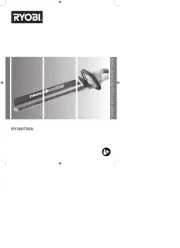
1 September 2025
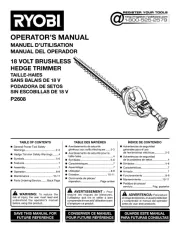
7 April 2025
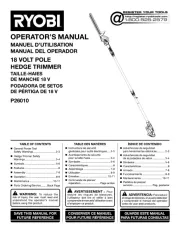
7 April 2025
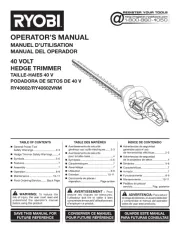
2 April 2025
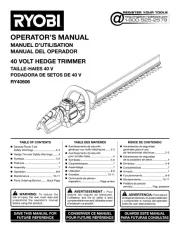
1 April 2025
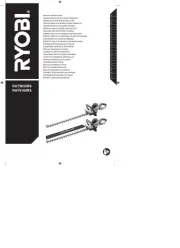
15 November 2024

23 Augustus 2024

22 Augustus 2024

27 Februari 2024
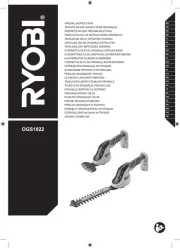
12 Juni 2023
Handleiding Heggenschaar
- Pattfield
- Gartenmeister
- Brandson
- Al-ko
- Maruyama
- Könner & Söhnen
- Eurogarden
- Flex
- Solo
- Yellow Garden Line
- Grizzly
- ID-Tech
- Dedra
- Deltafox
- Skil
Nieuwste handleidingen voor Heggenschaar
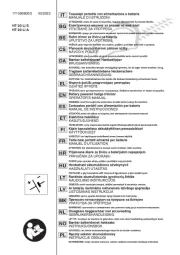
4 September 2025
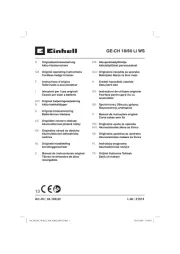
3 September 2025
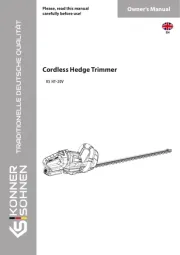
1 September 2025
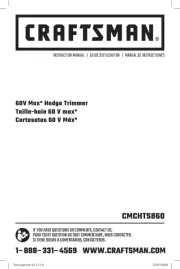
1 September 2025
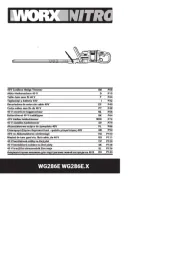
1 September 2025
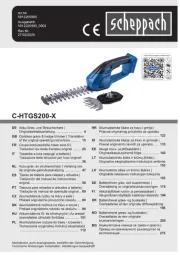
25 Augustus 2025
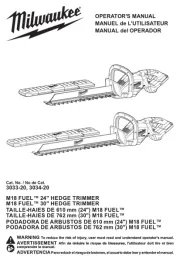
18 Augustus 2025
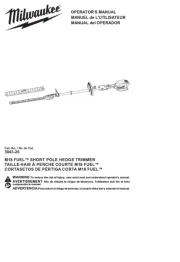
18 Augustus 2025
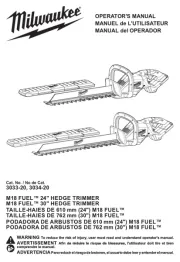
18 Augustus 2025
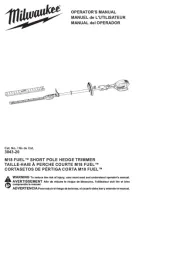
18 Augustus 2025